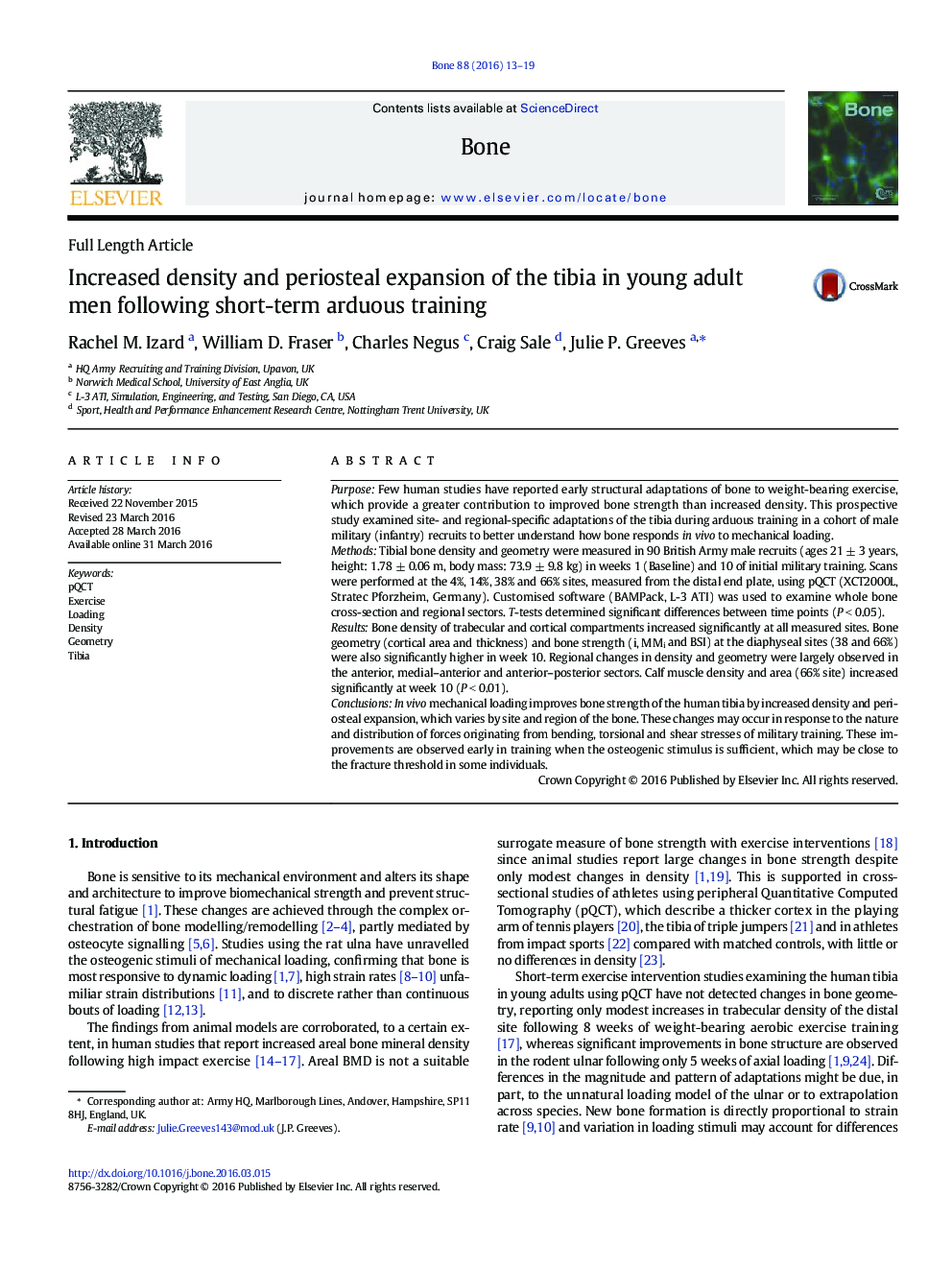| Article ID | Journal | Published Year | Pages | File Type |
|---|---|---|---|---|
| 5889011 | Bone | 2016 | 7 Pages |
Abstract
In vivo mechanical loading improves bone strength of the human tibia by increased density and periosteal expansion, which varies by site and region of the bone. These changes may occur in response to the nature and distribution of forces originating from bending, torsional and shear stresses of military training. These improvements are observed early in training when the osteogenic stimulus is sufficient, which may be close to the fracture threshold in some individuals.
Related Topics
Life Sciences
Biochemistry, Genetics and Molecular Biology
Developmental Biology
Authors
Rachel M. Izard, William D. Fraser, Charles Negus, Craig Sale, Julie P. Greeves,
